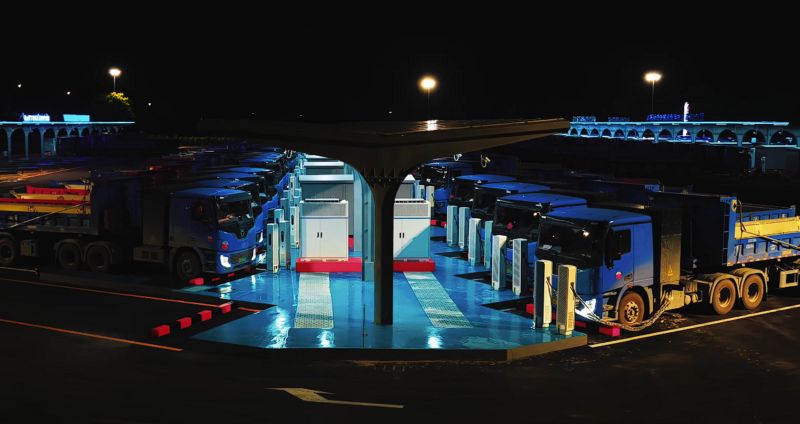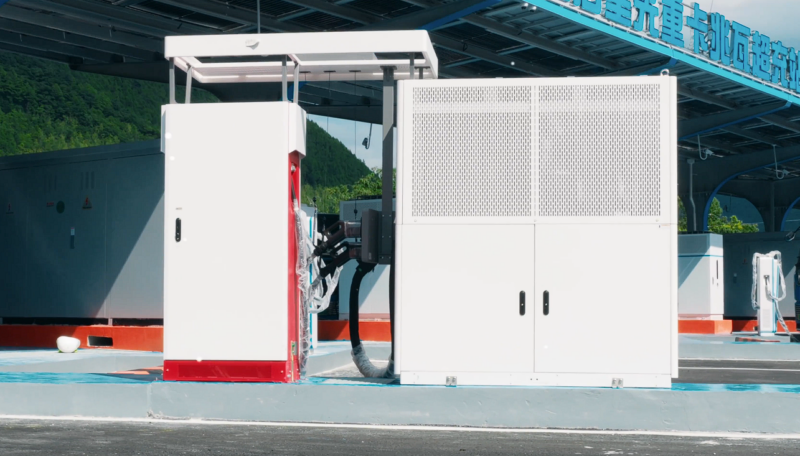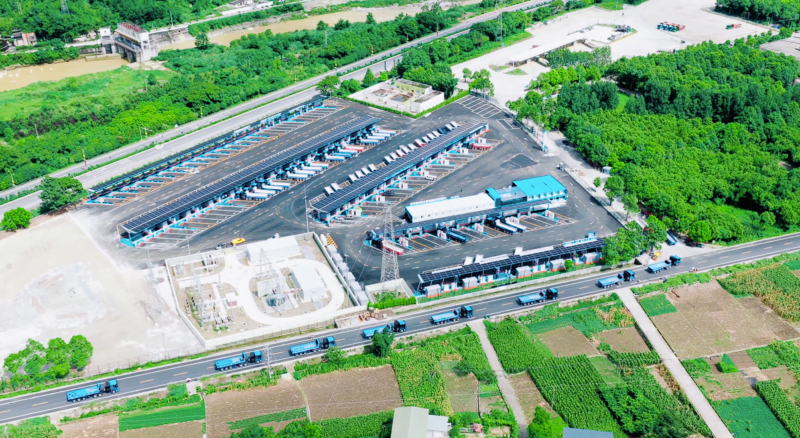The world’s first 100-megawatt (MW) class heavy-duty truck supercharging station, the Sichuan Yuanqi Xingguang Heavy-Duty Truck Megawatt Supercharging Station, officially commenced operations yesterday in Beichuan Qiang Autonomous County, Mianyang City, Sichuan Province. This facility is built on Huawei‘s Megawatt Supercharging technology.
The Sichuan Yuanqi Xingguang Heavy-Duty Truck Megawatt Supercharging Station serves as a megawatt-class supercharging demonstration site for medium-to-short-distance bulk material transport within Beichuan’s sand and gravel mines. Developed by Sichuan Yuanqi Xingguang Digital Energy Technology Co., Ltd. with an investment of 150 million yuan (20.86 million USD), the station spans an area of 70 mu (approximately 11.5 acres).
With a designed power capacity of 100MW, the station is equipped with 18 x 1.44MW supercharging bays and 108 x 600kW liquid-cooled supercharging bays. It is designed to serve up to 700 electric heavy-duty trucks daily, with a projected daily charging volume exceeding 300,000 kWh. The facility also integrates a nearly 1MW photovoltaic carport and two 215kWh wind-liquid intelligent cooling energy storage units.

Utilising Huawei Megawatt Supercharging equipment, the station is compatible with “3.5C” supercharging heavy-duty trucks, enabling drivers to achieve “charge for five minutes, drive for 100 km.” Truck owners are projected to save 1.5 yuan (0.21 USD) per kilometre in energy costs, amounting to 150,000 yuan (21,000 USD) annually, effectively “saving the cost of a truck in three years.” For station operators, the boost in charging efficiency is expected to improve operational efficiency by over 15%.

A key innovation of the station is its enhanced grid friendliness. Huawei’s solution integrates smart photovoltaics and grid-forming energy storage to create a “source-grid-load-storage microgrid.” This microgrid can operate both connected to and independently from the main grid, effectively mitigating the impact of high-power charging on the grid and addressing stability concerns. Furthermore, the microgrid leverages VPP (Virtual Power Plant) technology to interact with the grid, maximising the consumption of renewable energy, reducing costs through peak-valley arbitrage, and boosting revenue, thereby achieving “vehicle, pile, and grid” synergy. The “PV-storage-charging” integrated solution deployed at the station generates approximately 5,000 kWh of green electricity daily. The electrification of heavy-duty trucks is projected to further reduce carbon emissions by 45,000 tons annually.
Follow us for ev updates









